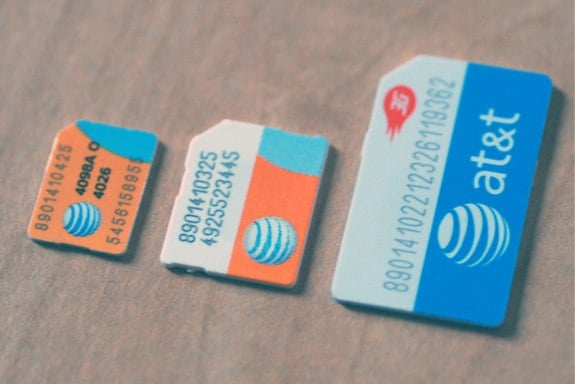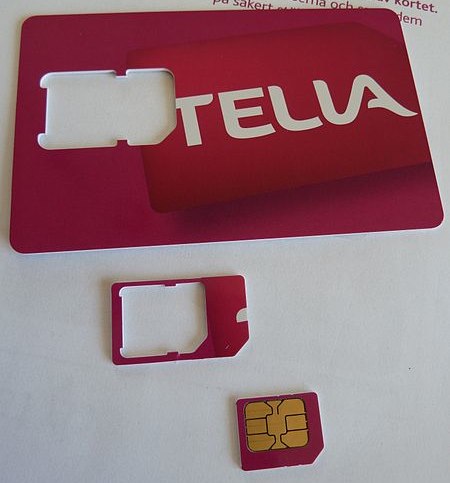Find Our Latest Video Reviews on YouTube!
If you want to stay on top of all of our video reviews of the latest tech, be sure to check out and subscribe to the Gear Live YouTube channel, hosted by Andru Edwards! It’s free!
Thursday October 11, 2012 6:21 pm
The ever-shrinking SIM card

What you see in the image above is the evolution of mobile phone SIM card design over the past four years. The largest in the image, known as the mini-SIM, was used for quite a while as the standard in GSM cell phones. However, as smartphones began to rise in popularity, drop is cost, and brought increased functionality, it was determined that the mini-SIM just wasn't mini enough. It took up too much of the precious real estate that mobile phone manufacturers needed for other things. Thing like a GPS radio, Wi-Fi, larger batteries, dock connectors, graphics chips, and more. And so began the start of the shrinking SIM card.
SIM is short for subscriber identity module. To make it simple, it authenticates a device to use your account specific account. In the United States, we didn't really see the introduction of the micro-SIM (3FF) until Apple introduced the iPhone 4. The new micro-SIM was 15mm x 12mm in size, down from the 25mm x 15mm mini-SIM. Both come with a chamfered edge to prevent misinsertion into the device.
Earlier this year, the nano-SIM (or 4FF) was introduced. Both Apple and Nokia were battling over the standard, each making the case that its design should win out over the other. In the end, a nano-SIM was sort of a compromise between the two proposals. The new card measures in at 12.3mm x 8.8 mm and is 0.67mm thick, a 15% reduction in thickness from the previous cards. The nano-SIM is almost all contact area, with just a thin rim of plastic to avoid a short circuit.
The nice thing about all these recent changes is that there are adapters you can use to insert smaller SIM cards into devices that require the larger sizes. For example, you can put the new nano-SIM into a device that requires a micro-SIM or mini-SIM. It's not an elegant solution by any stretch of the imagination, but it's there to relieve a bit of the headache. The cards are also now shipping on breakway full-size SIM (1FF) cards (these look similar to credit cards) that allow you to punch out the contact of the SIM into whatever size you need.

So now, we move towards the nano-SIM. The only current mass market device using it is the iPhone 5, but we expect to see it turn up in other phones in the next few months, possibly starting with Nokia devices. The annoyance here is that SIM cards are supposed to be easily swappable between devices--that's part of what makes GSM service so much more tolerable than CDMA. Just swap your card into another device (or swap an international card into your current device) and your service is transferred over in an instant.

Now, devices need to play catch-up again, just when the micro-SIM was pretty much ubiquitous. It will take a while for the majority of smartphones to migrate to the nano-SIM standard, and who knows how long the nano-SIM will be around before the next, smaller SIM card standard emerges? In the quest for thinner, feature-packed devices, it could be much sooner than we expect.
Latest Gear Live Videos
Advertisement
Advertisement
Advertisement
© Gear Live Inc. {year} – User-posted content, unless source is quoted, is licensed under a Creative Commons Public Domain License. Gear Live graphics, logos, designs, page headers, button icons, videos, articles, blogs, forums, scripts and other service names are the trademarks of Gear Live Inc.











